Rodriguez puts faith in Hauptman, sets out to rebuild Chicago Fire
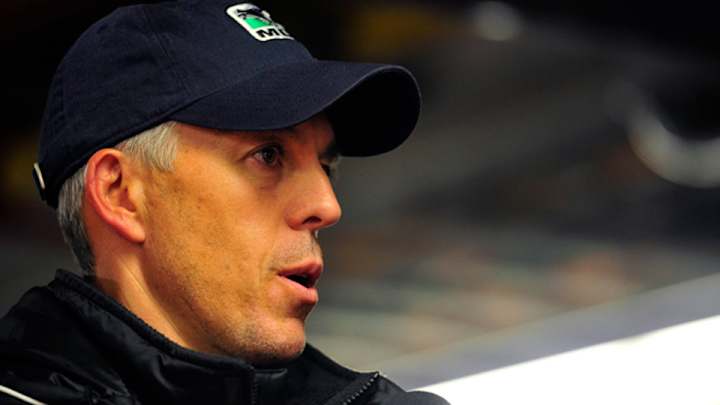
Nelson Rodriguez doesn’t plan on spending too much time in his new Toyota Park office, at least for the foreseeable future. So his needs were relatively minimal.
“The only thing I require out of an office is that there’s a window,” he said.
The view from that window isn’t great. Objectively, it’s better than a wall only if you really appreciate asphalt. The Chicago Fire’s nine-year-old stadium is surrounded by a ton of it, in addition to the warehouses, empty lots, humble apartments and nondescript intersections that characterize that part of Bridgeview, Illinois.
But when the sun shines through and Rodriguez looks out, he sees only the bright side.
“It keeps me grounded and makes me realize there’s a lot of pavement we’ve got to pound to restore the glory,” the club’s new general manager told SI.com this week, his first on the job. “I see unbelievable opportunity.”
Insider Notes: Klinsmann's U.S. Soccer power struggle; Kreis out?
Chicago was a Major League Soccer powerhouse when it moved the 14 miles from Soldier Field to Bridgeview in 2006. Launched in 1998, the organization already had won one MLS Cup, one Supporters' Shield, three U.S. Open Cup championships and four conference/division titles. It then claimed the ’06 Open Cup for good measure. Rodriguez called the Fire “one of the three great clubs in MLS history.”
Then the decline began. The lack of development outside the stadium has been eclipsed by the regression inside. Chicago fell in the Eastern Conference final for three straight seasons and then in 2010, it stumbled into a miserable six-year stretch during which it made the playoffs only once. Interim coach Brian Bliss is the seventh man to hold the position since the Fire moved to Toyota Park. But for many fans, owner Andrew Hauptman is to blame for the freefall.
The Los Angeles-based investor took over in mid-2007 and hasn’t been shy about spending money. He put $3 million toward upgrades at the stadium, which is owned by the city, and paid $20 million for the PrivateBank Fire Pitch, a public field complex on Chicago’s north side. Hauptman injects more than $1 million per year into the Fire’s academy, which is fully funded down to U-10, and has tried to sign big-name players like Didier Drogba and Jermaine Jones. According to the MLS Players Union’s September figures, the Fire’s first-team payroll ranked 11th in the 20-team league.
MLS Power Rankings Week 33: Decision Day nears; Timbers bust out
But none of it has had a positive impact on the field. Chicago (8-19-6) is guaranteed to finish with the league’s worst record regardless of the result of Sunday’s season finale against the visiting New York Red Bulls. There have been protests inside Toyota Park and elsewhere in Chicago. But Hauptman stayed quiet and declined to counter the miserable narrative until finally dismissing head coach and director of soccer Frank Yallop last month.
The same day, Sept. 20, Rodriguez was named the Fire’s new general manager. A long-time MLS executive who ran Chivas USA on the league’s behalf during its final season and then spent the past year working with the U.S. Soccer Federation advising junior and senior national team players, Rodriguez now is responsible for cleaning up the mess and setting a new course.
There are those who might see the bleak records and bleak surroundings and consider the job impossible. There are those who might wonder if Hauptman is sufficiently caring or conscientious and whether any executive can succeed on this owner’s watch. Rodriguez isn’t among them. His faith in his new boss and the Fire’s potential in a crowded but sports-mad market is such that he traded away the security and relative anonymity of his position at U.S. Soccer in order to take it on.
“We have the resources at this club to build the program that we think will lead us back to the glory that we experienced,” Rodriguez said. “It kills Andrew, eats away at him, that the team hasn’t had on-field success. He’s hurt by it. I dare say he’s embarrassed by it. No person who cares as much isn’t affected by that, and he does care … I think Andrew is misunderstood. Maybe his humility has worked against him because he hasn’t come front and center. But I know from my time at the league office and am quite certain based on the conversations we’ve had, that he’s committed to building a model club in MLS and winning is a big part of it.”
A New Jersey native who coached college soccer at Lafayette and worked for the 1994 World Cup organizing committee and the New York Red Bulls (then the MetroStars) before joining MLS in 2000, Rodriguez was promoted to executive VP and interacted with just about every owner and club executive during his tenure at the league office. That included Hauptman, who occasionally would seek Rodriguez’s advice. Hauptman did so when he fired coach Frank Klopas in 2013, in fact, but apparently didn’t follow it.
“Part of the conversation that Andrew and I had recently, which led to my coming here, he said, ‘I reflected on my notes from our conversation and I realized that there were certain things you mentioned that I either wasn’t ready to accept or I didn’t accept, but I understand now.’ That is an incredibly humbling statement,” Rodriguez said. “He is a big reason I wanted this job. I do believe that he’s humble. I do believe he listens and takes feedback.”
MLS, Twitter expanding partnership for Decision Day season finales
Rodriguez has been empowered to rebuild the Fire’s soccer structure, and he’s going to start toward the top.
The best way to mend fences with frustrated fans and an ambivalent press corps is winning, he said, and that begins with hiring the right head coach. Considering the market, history and Rodriguez’s reputation, it should be a sought after job.
“I think there will be available to us, and are already, some excellent coaches—coaches with international pedigree, coaches with a domestic history of success and all the rest of it. But that alone is not enough to necessarily make them right for the Fire,” Rodriguez said. “I have very definitive ideas in mind of how to proceed. That said, I want a head coach who’s going to be my partner, who’s going to pressure test what I say and vice versa. In that collaboration, we might find a third option that’s even better than his or mine, so to speak.”
Rodriguez said he believes that, “The head coach should not be the czar.” The pressure and commitment to earning three points on Saturday doesn’t always align with building the infrastructure of a club for the mid and long-term. As the league evolves, the stakes and costs rise and academy and USL teams enter the picture, it becomes too much for most people to handle. Whether or not Rodriguez pursues additional help on the technical side depends on how the new coach fits.
“When we look at the strengths of the head coach and I balance that against my strengths, we’ll look to see where the gaps are and how we may seek to cover them,” he said. “I’m opened minded to seek the best people first, put them in the right spots and see how it works, then fill in the gaps.”
He hopes to have a coach in place by Thanksgiving.
“We can’t wait to see who’s available [in December]. That would be negligent. We have a list of candidates already and I’ve been naively surprised at some of the folks who’ve expressed interest,” Rodriguez said.
Schedule not only change CONCACAF considering for Champions League
There’s considerable work to do on the roster as well, which isn’t surprising for a club that has won a paltry 14 of the 67 MLS matches scheduled over the past two seasons. Rodriguez and his future partner should have some leeway. Designated Players David Accam and Gilberto, along with one-time DP Kennedy Igboananike, are under contract next year. But that doesn’t necessarily mean they can’t be moved.
Mike Magee ($400,000 base salary) will be out of contract, while the likes of Jeff Larentowicz ($265,000), Lovel Palmer ($118,000) and Adaílton ($200,000) enter option years. There will be money to spend if Rodriguez and his coach pull the right strings.
“I don’t want this to be misconstrued as a comment against our current Designated Players, but I would say that the DP should finish the puzzle, not start it,” Rodriguez said. “I’m putting the puzzle together and I’m confident that if it makes sense, we certainly have the wherewithal to do what we need to do. Those choices will be mine to make.”
He’ll make them on the move. Rodriguez believes in “A lot of face to face.” He wants to meet with coaching candidates in person, as well as their references. He wants to go watch college games—the Fire will have the first pick in January’s draft—and chat with scouts and others who follow other levels of the sport. He prefers a “hands-on” approach. He won’t be on the training field, he said, but he will spend time with players in order to ensure that, “The standard we wish to set for the soccer operation are being met or exceeded.”
He’s already engaged with supporters as well. When U.S. Soccer granted him a couple days at the beginning of October to meet his new colleagues at Toyota Park and get the lay of the land, he went on his own to The Globe Pub, a Chicago bar popular with soccer fans.
Rodriguez said he found that interest in the Fire hadn’t waned. It was still their club. But optimism had faded. Luckily, optimism is what Rodriguez does well.
“There is a real bond here with this club,” he said. “And I think there’s a whole bunch of other people who are just waiting to come back or jump on board if we can just give them enough reason to. All of that comes down to one thing and one thing only—winning.”
Stillitano's rise from MLS GM to world soccer's best-connected American
No one knows MLS better than Rodriguez. But this job represents a different sort of challenge. He wasn’t judged by wins and losses during his tenure at the league office, and he wasn’t the one charged with instituting a corporate and competitive culture. Nevertheless, his appointment has been regarded inside U.S. soccer circles as a smart move by an owner who needed to make one. It’s crunch time for the Fire. A glorious history is fading fast.
“My dream was to be [former Real Salt Lake owner] Dave Checketts,” Rodriguez said of his transition from coaching to management. “I wanted to preside over some great sports program and Andrew’s been kind enough to give me that opportunity and I’m going to give him everything I have to fulfill my fantasy and reward his faith.”
He understands the stakes and the desperation, and he wants to hire a coach who feels the same. Together, Rodriguez believes they can make Toyota Park a much more attractive place to be.
“I feel like I’ve pushed all my chips in, taking this job,” he said. “I’m 50, and if I don’t succeed and the Fire don’t succeed, I think my opportunities in pro soccer will be vastly diminished, if not extinct, at the end of this run. I want someone who has that same sense of urgency to succeed as I do.”
GALLERY: Critiquing all 2015 MLS jerseys
Critiquing every MLS uniform, head to toe
New York City FC
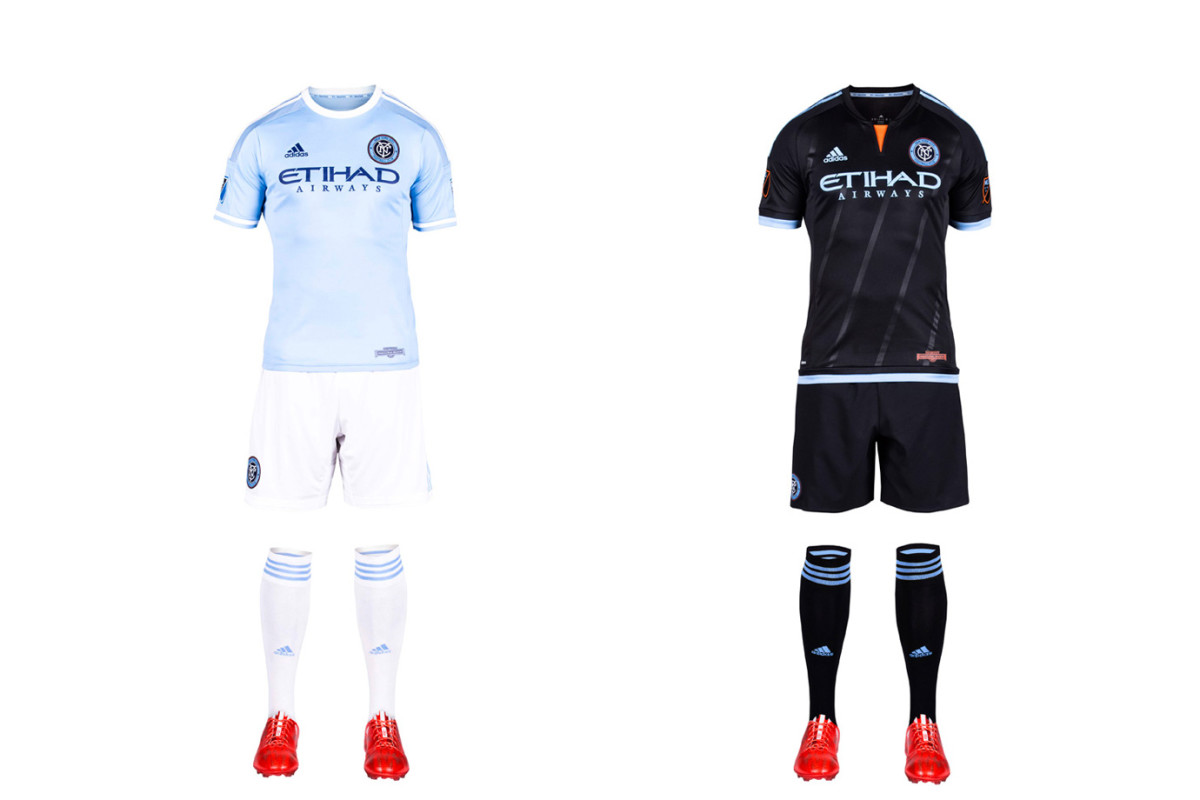
New York City FC took some heat for its sky blue home shirt, which looks a whole lot like the one worn by parent/sister club Manchester City. But an homage was inevitable, and NYCFC has differentiated itself from MCFC, and the rest of MLS, with the white shorts and socks. It’s a sharp look. The away kit, highlighted by a flash of orange (from the city flag) at the neck and five stripes you can barely see that "represent the five boroughs of New York City," is lazy. With a blank template, NYCFC should’ve come up with something other than the mono-black already worn in D.C. and Columbus.
LA Galaxy
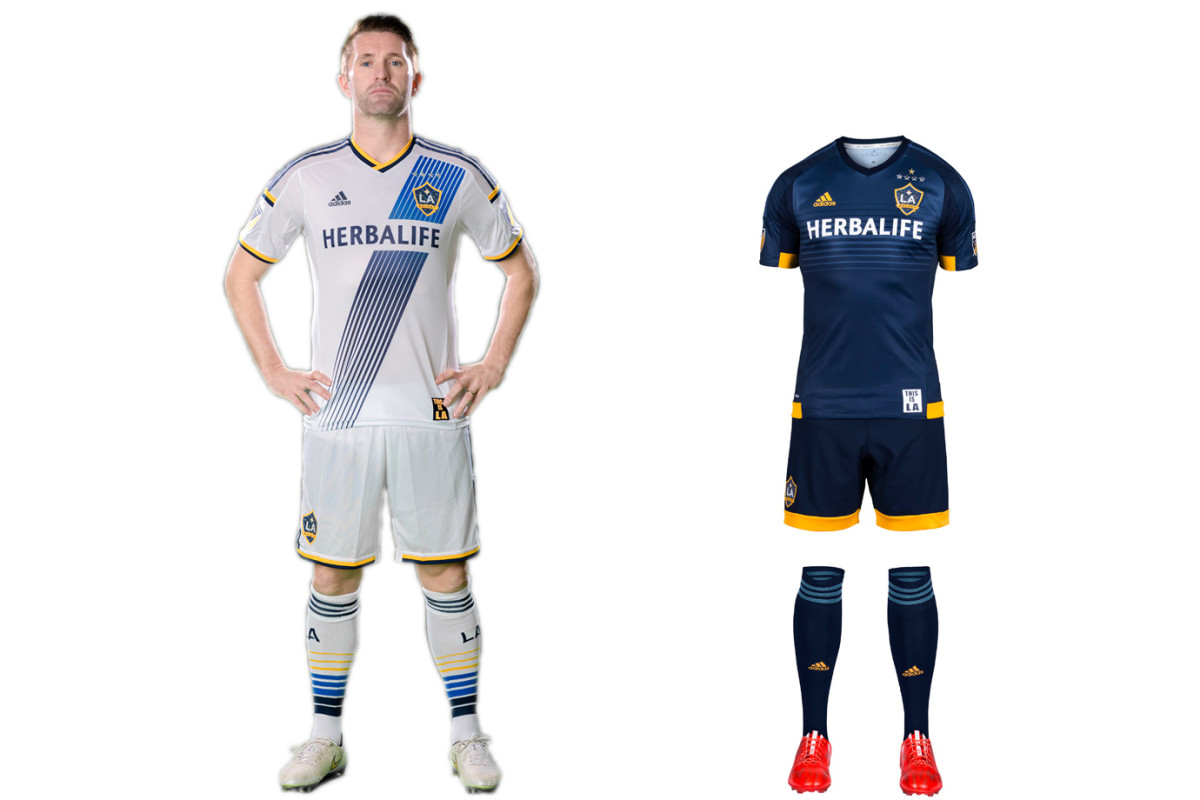
After several overhauls—LA wore black and teal, then teal and yellow, then yellow and green—the Galaxy’s white and blue brand has taken root. Three championships in four years certainly help. The sash on the home uniform, re-introduced in 2012, has quickly become iconic, and, along with the socks, helps make this all-white kit stand out. The new secondary set maintains the same feel as its recent predecessors. The yellow accents look sharp, but we can’t help but feel a white or yellow sash would tie the uniforms and brand together.
Chicago Fire
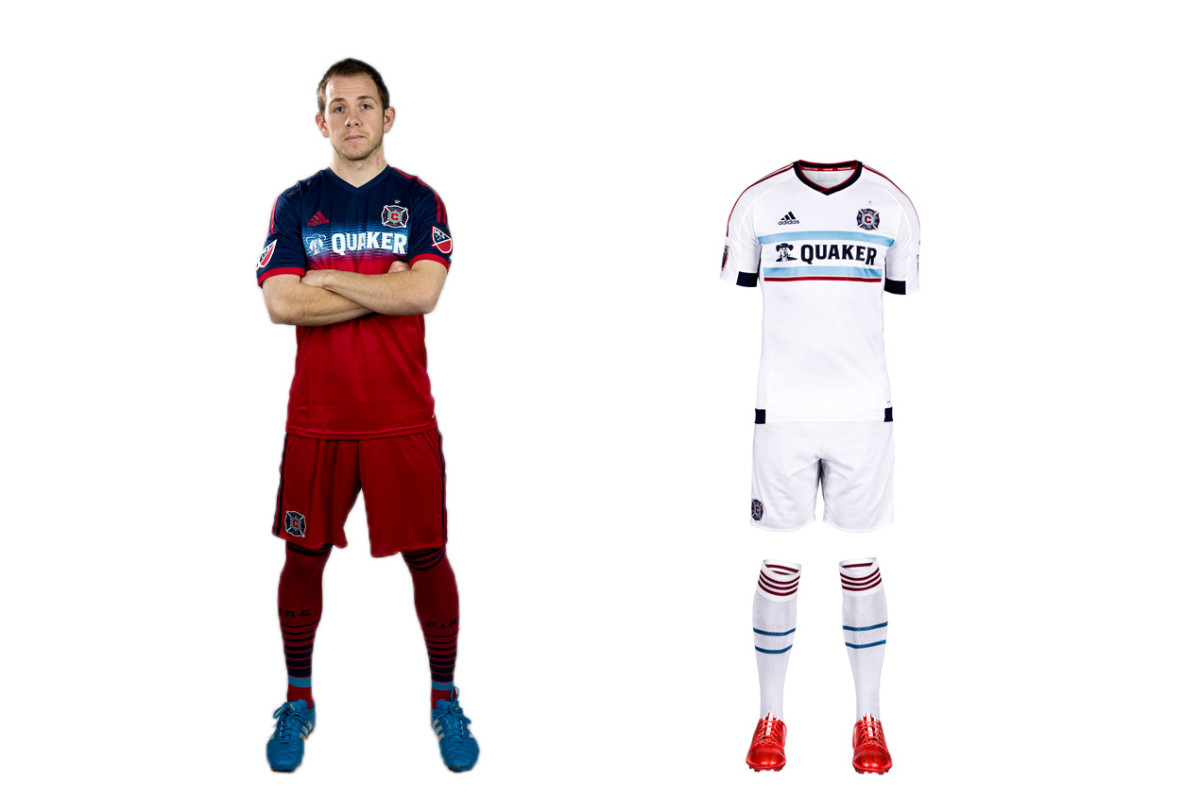
Of the four MLS teams with an all-red home uniform (that’s 20 percent of the league), the Fire were first. They’re the “Men in Red,” after all. But Chicago began veering away from its traditional look in 2012. First the famous white hoop became blue. Then last year, the blue expanded to the chest and shoulders. It doesn’t look bad, but it doesn’t seem right, either. The new away kit is another all-white offering. But at least designers put a bit of thought into this one. The thin, light blue hoops on the shirt and socks, intended to reflect the design of the city flag, are a nice touch.
Montreal Impact
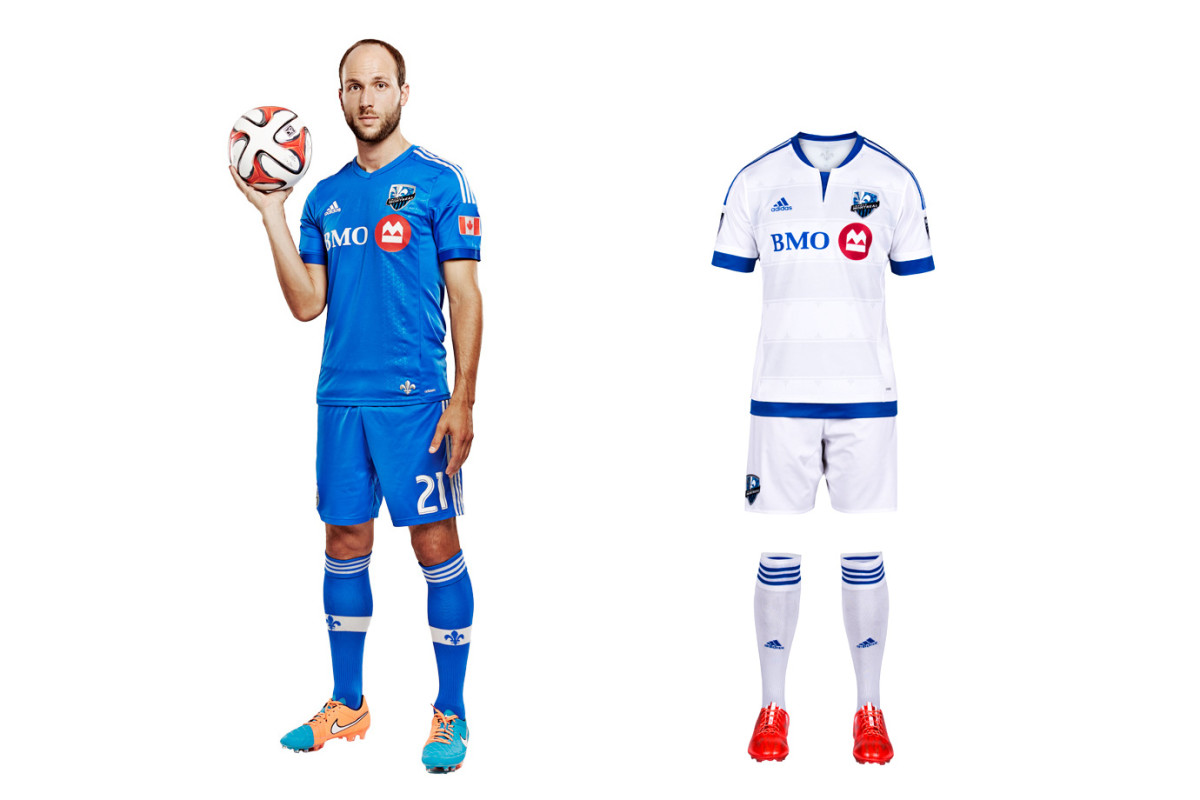
Montreal exemplifies MLS/Adidas’ fixation on tiny details rather than the impact (sorry) a uniform makes when viewed from more than three feet away, which is where most people watch a game. The new away kit features a tiny silver fleur-de-lis affixed to the back and more woven subtly into the fabric. But overall, it’s just another anonymous all-white uniform that mirrors the existing, plain blue primary set. The tragedy is that Montreal’s gorgeous blue-and-black striped alternate, which would be the only striped kit in MLS, is gathering dust. It should be the club’s primary.
D.C. United
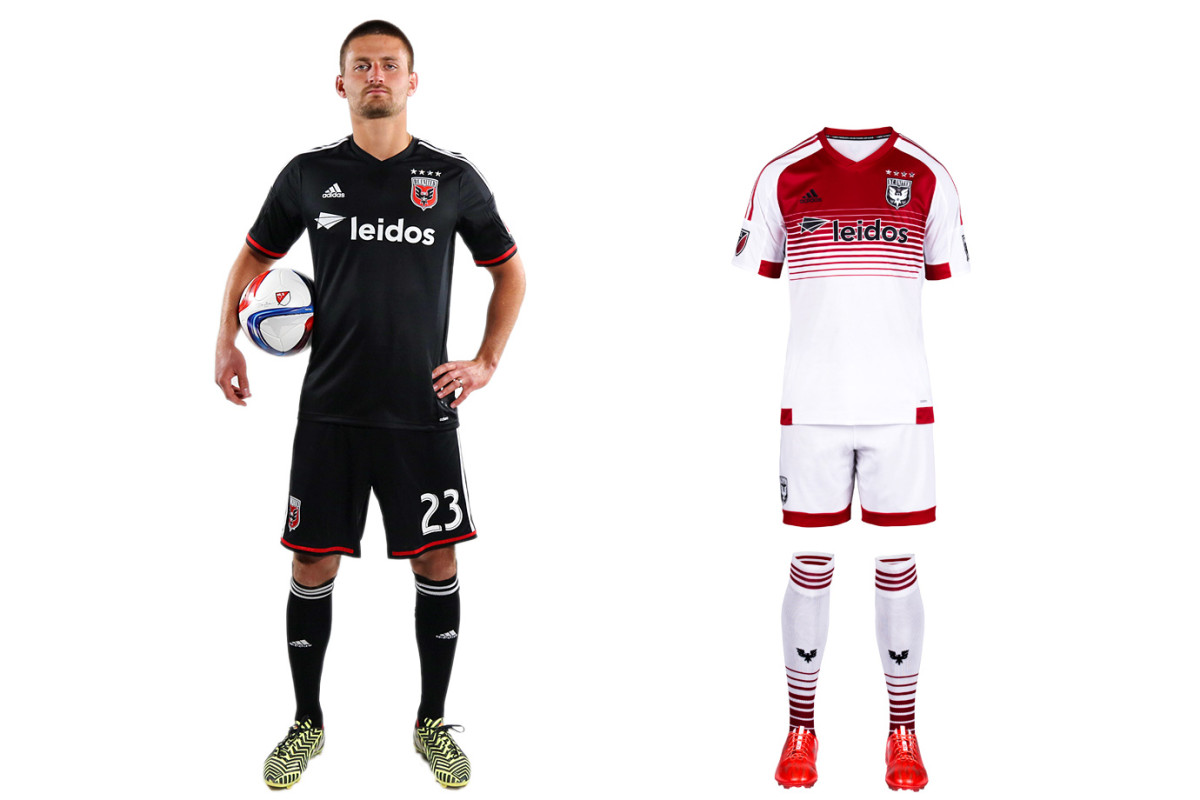
D.C. United calls itself the “Black and Red,” but its uniform palette typically has ignored the latter. That’s been rectified with the club’s new secondary kit, which features a welcome splash of red on the traditional white jersey. The home uniform, which carries over from 2014, still looks unfinished without the white chest stripes that were dropped in 2008. If D.C. could find a way to re-introduce them, perhaps above the sponsor logo and behind the crest, it once again would boast one of the sport’s most distinctive designs.
Real Salt Lake
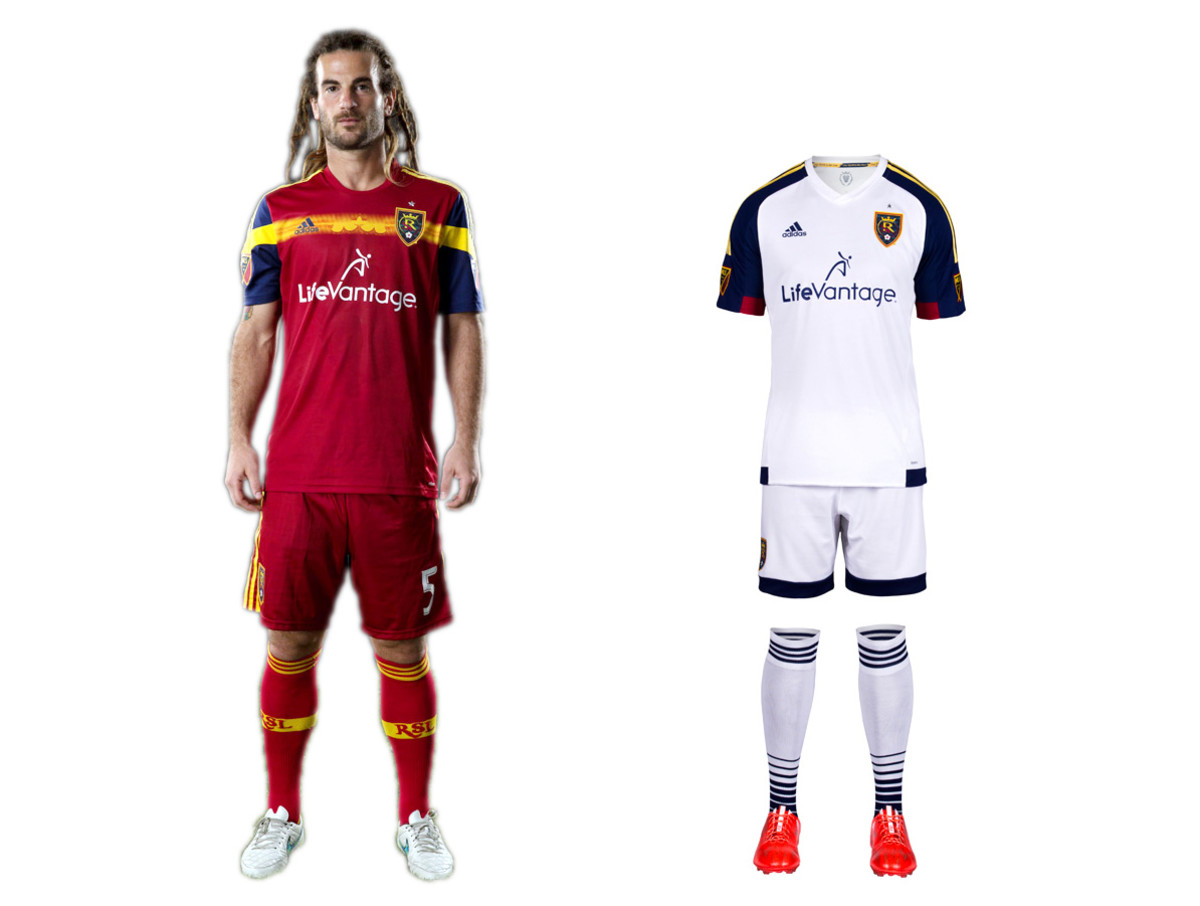
RSL stubbornly refuses to look great. It took a small step forward with its new secondary uniform, which now features two blue sleeves. It's too bad there isn’t even more of RSL’s beautiful claret, cobalt, and gold color scheme in the kit. The red home set carries over from 2014, making it six seasons since RSL abandoned the claret shirt, cobalt shorts/socks combo it wore when winning its only MLS title. The yellow chest stripe adds a little something extra, but RSL’s preference for an all-red kit similar to others around the league instead of a classy, one-of-a-kind look with championship pedigree is baffling.
Toronto FC
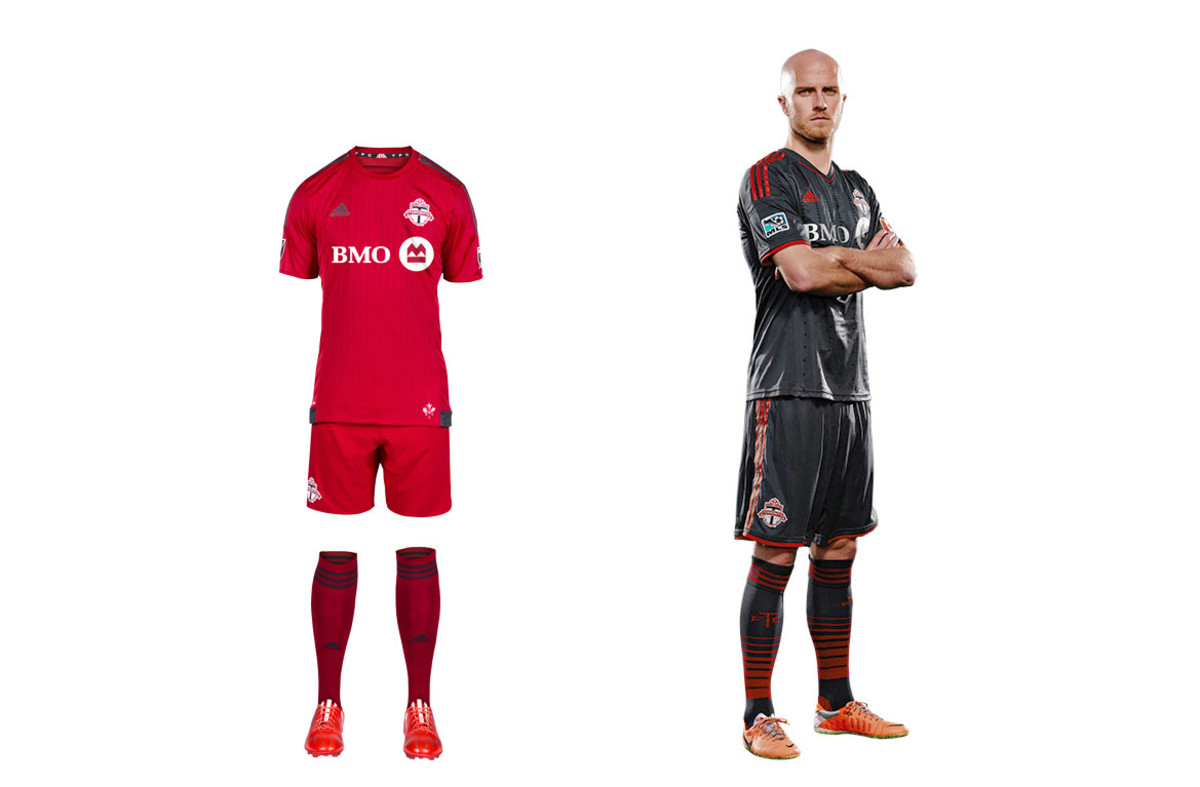
Toronto FC’s new home set could be the reddest uniform in the history of a league that loves red uniforms, which we suppose is noteworthy (guess Adidas insisted on the contrasting three stripes). Club management has focused on building a team capable of ending an eight-year playoff drought, likely leaving little time for kit design. The holdover secondary set is charcoal gray, which features in the TFC logo and is a unique uniform color in MLS. The hooped socks finish off a striking look and make us wish there was a bit more gray in the primary.
New England Revolution
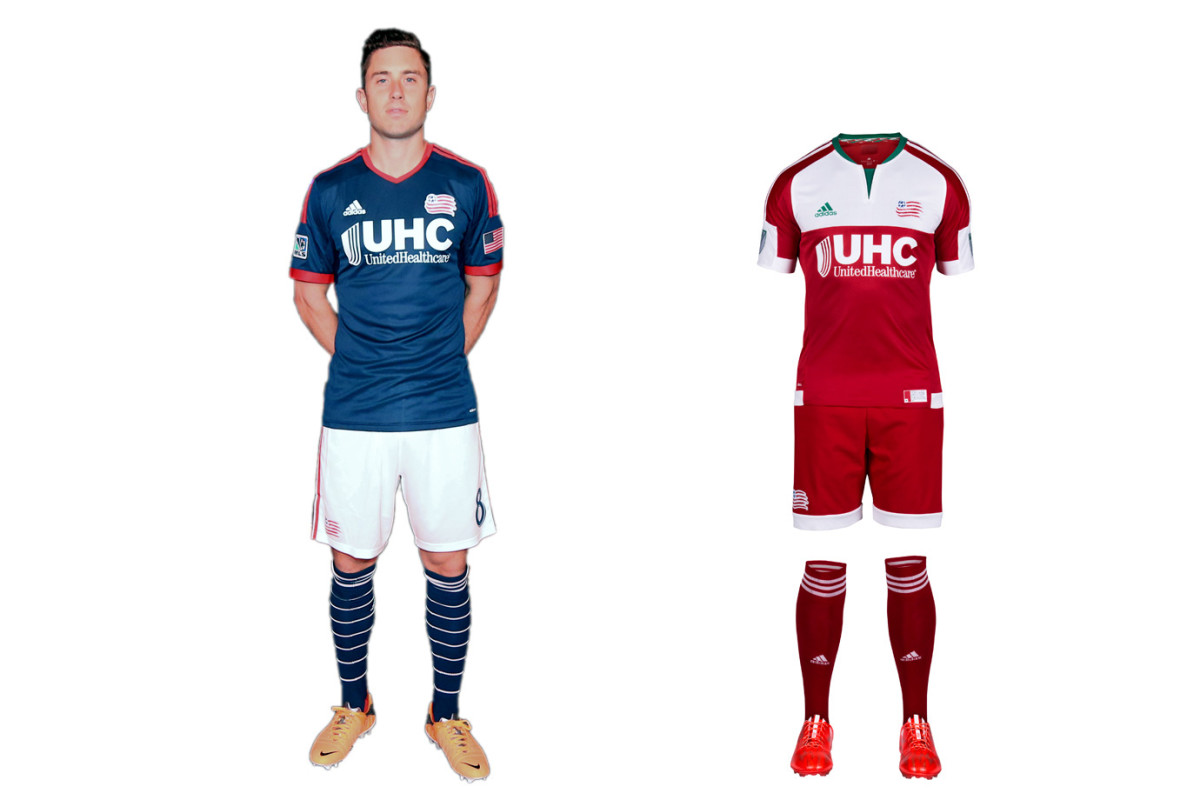
The Revs are Exhibit A for the effect a second color, even if it comes from something as mundane as a plain pair of shorts, has on a club’s brand. Long a believer in boring, N.E. last year overhauled its home blues with white shorts and hooped socks. It’s a classy yet instantly recognizable look. The image shake-up continued Tuesday with a new secondary kit inspired by the regional flag flown during the American Revolution. The red-and-white set is clunky and geometric, but it’s different, daring and local. Better to take a chance than look dull and anonymous.
Philadelphia Union
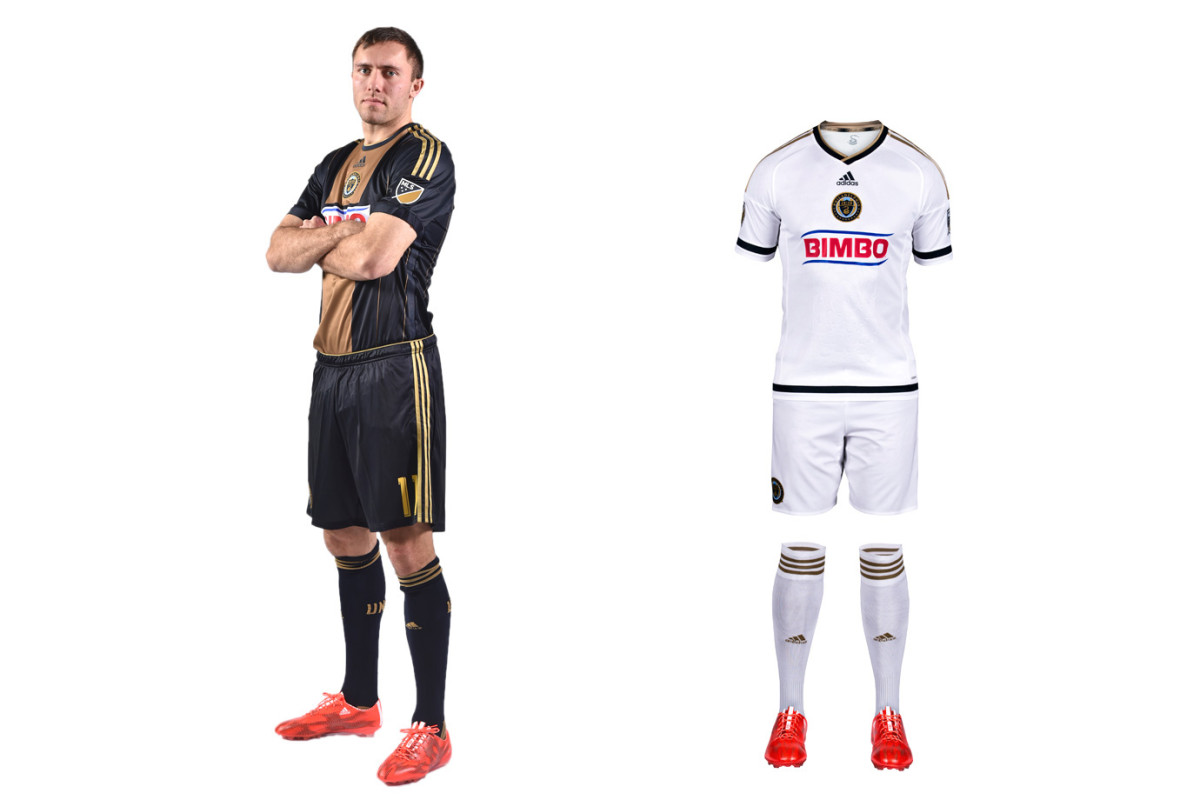
The Union got it right in 2010. The inaugural navy kit with the gold center stripe, reflecting the Philadelphia flag, was iconic. The gold-and-blue away set, a reversal of the primary, was one-of-a-kind. The holdover home uniform still looks great, although the sponsor’s logo wrecks the balance. But the new secondary is a disaster, a needless departure from the brand and an 10th all-white MLS kit. Once innovators, the Union are now followers. The “WE ARE ONE” collar slogan, the tiny snake below the neckline and the embossed stars on the front are lost in a sea of white.
Vancouver Whitecaps
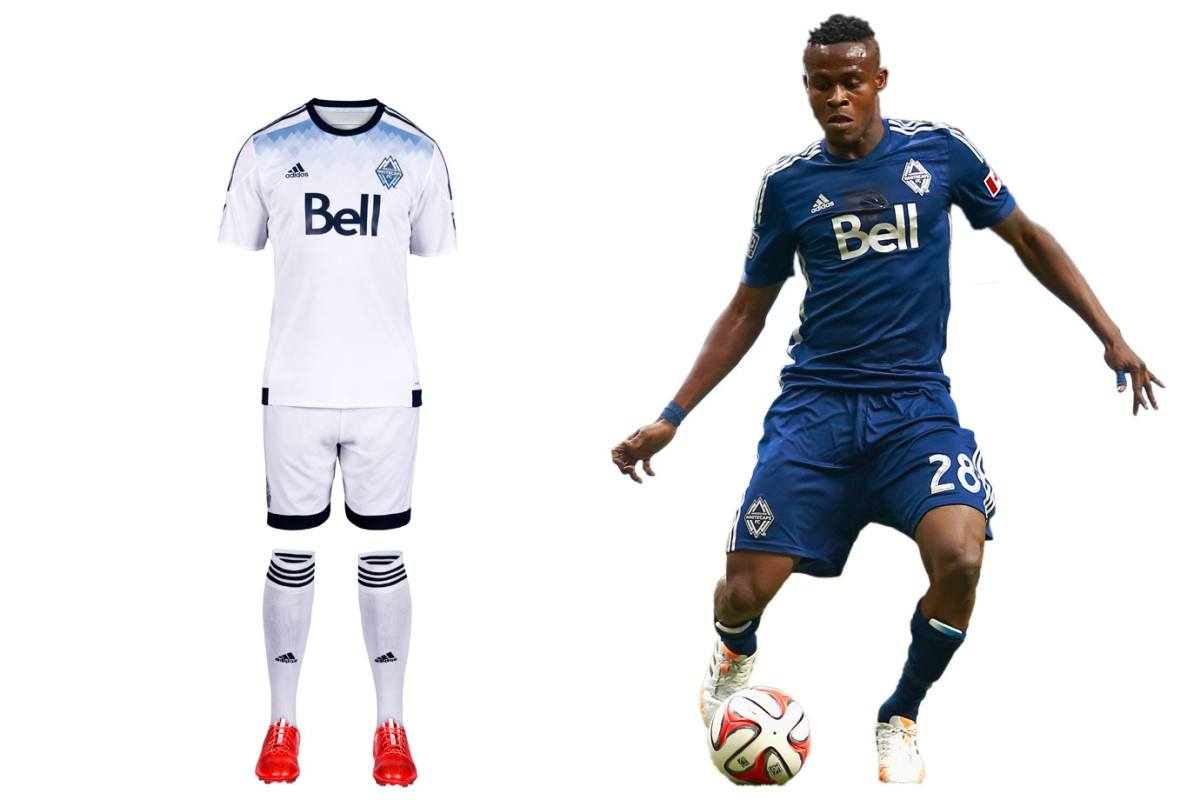
The Vancouver Whitecaps new primary uniform is meant to be experienced up close. It’s slogan heavy. “Our All. Our Honour.” appears inside the neck and on the hip. “SINCE 1974” is on the back. The thin, diagonal pinstripes that featured on the previous home kit have been replaced by light blue shading designed to represent Vancouver’s water and mountains. It’s all a bit too subtle. The shirt will look nice with jeans, but in the end, Vancouver’s all-white kit—and the holdover mono-navy secondary—simply blends in.
Portland Timbers
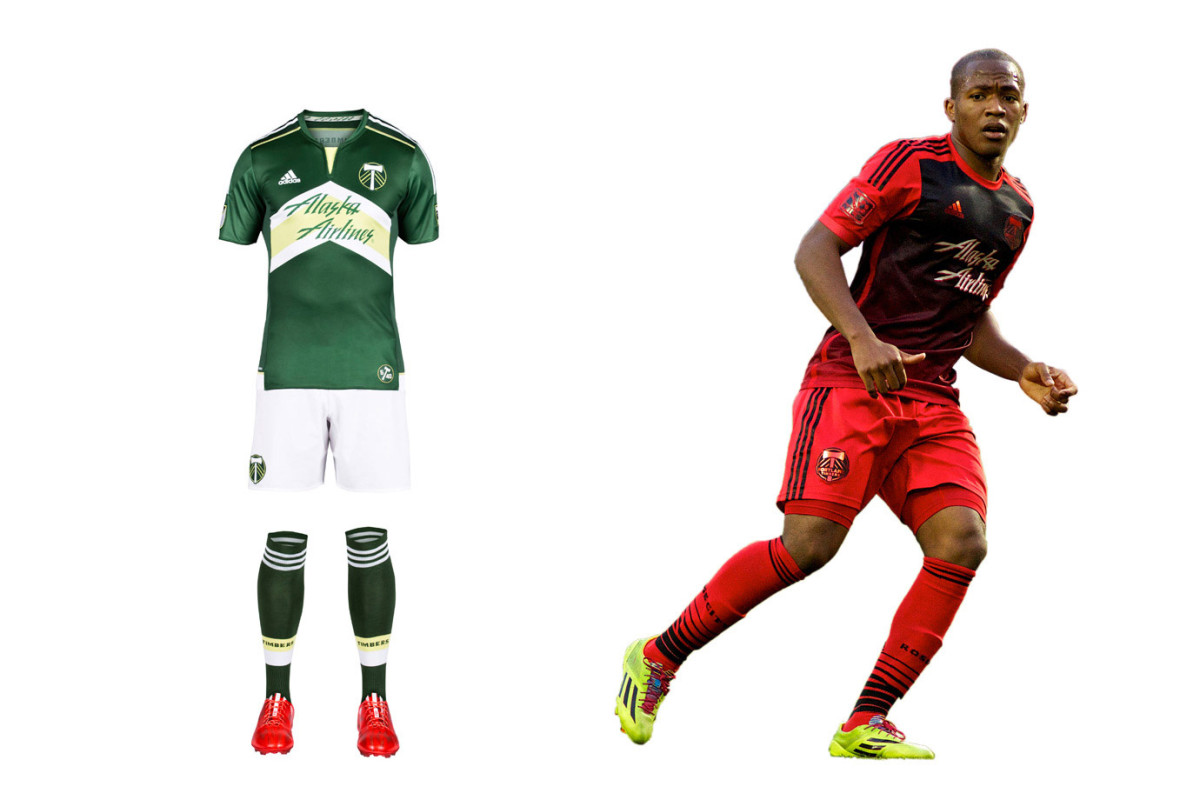
Portland quietly switched crests, from a logo featuring its name to a simpler version focusing on the axe and chevrons (the old logo lives on elsewhere). Few teams wear a badge with no writing, but the Timbers can because they’ve built such a powerful brand. Only they could wear the new home set, a bold green-and-white offering anchored by the chevrons. They're a bit wide, and the yellow below the collar clutters the shirt, but it's impressive overall. The road kit, released in 2014, is everything a good one should be: distinctive, perhaps edgy, yet connected to the club. In this case, Rose City red.
Columbus Crew
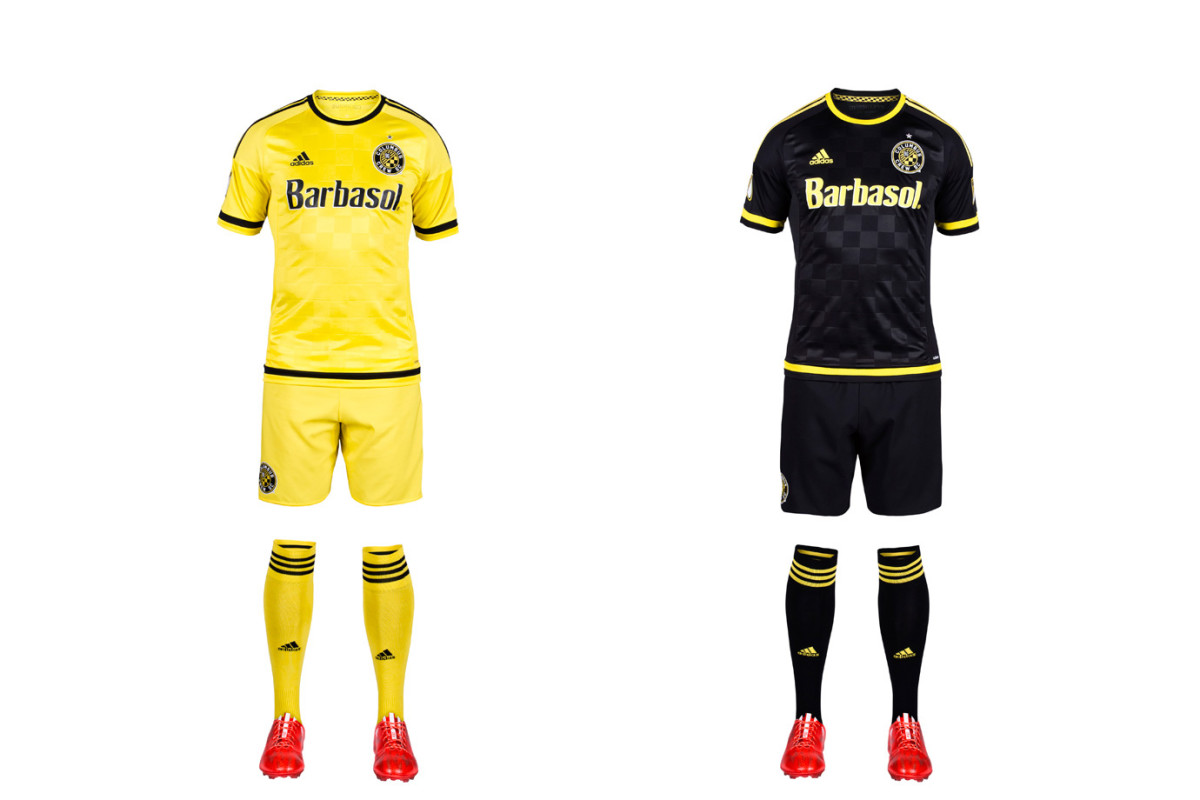
The Crew released new home and away sets featuring the club’s revamped logo, a roundel that looks nice enough but makes sense only with a cheat sheet. The explanations (the ‘O’ for Ohio, the founding year, the checkerboard pattern found in flags waived by fans) certainly tie the club to Columbus more than the goofy construction workers did. As the Crew forge ahead, they’ll stay true to their sartorial tradition. The all-yellow primary is simple but elegant, and certainly recognizable. The mono black secondary could use a bit of flourish–why so subtle with the checkers? But it works and shouldn't be needed that often, anyway.
Orlando City SC
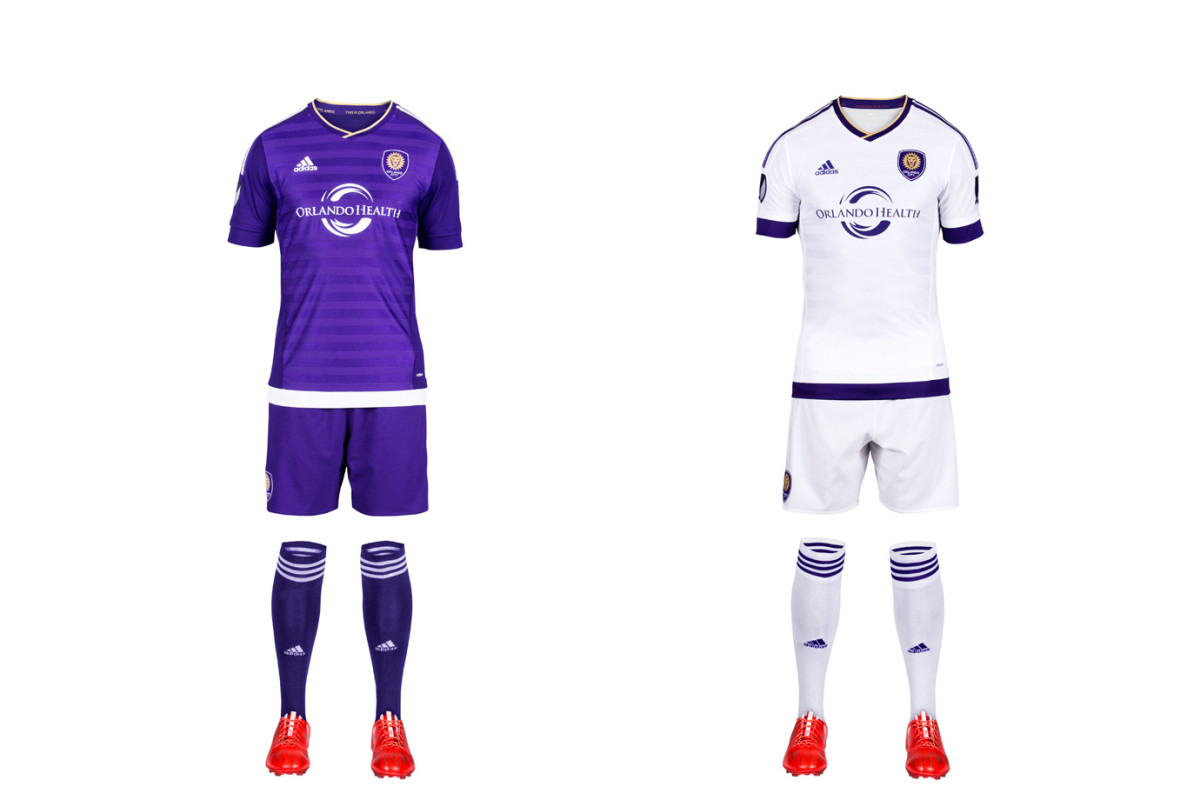
The Lions’ love for purple is welcome in a league featuring so many similar looks. But it didn't result in creative inaugural kits. The home uniform features more up-close details, like “jacquard engineered banding…representing Orlando City’s transition to a new era” and even the club's old USL logo inside. The mono-white secondary has colored hoops on the waist and sleeves and includes more small symbols and slogans. But it’s still just another white set. The answer is obvious—swap the socks. The “Chelsea” look is underrated. White hosiery at home and purple on the road would make all the difference.
New York Red Bulls
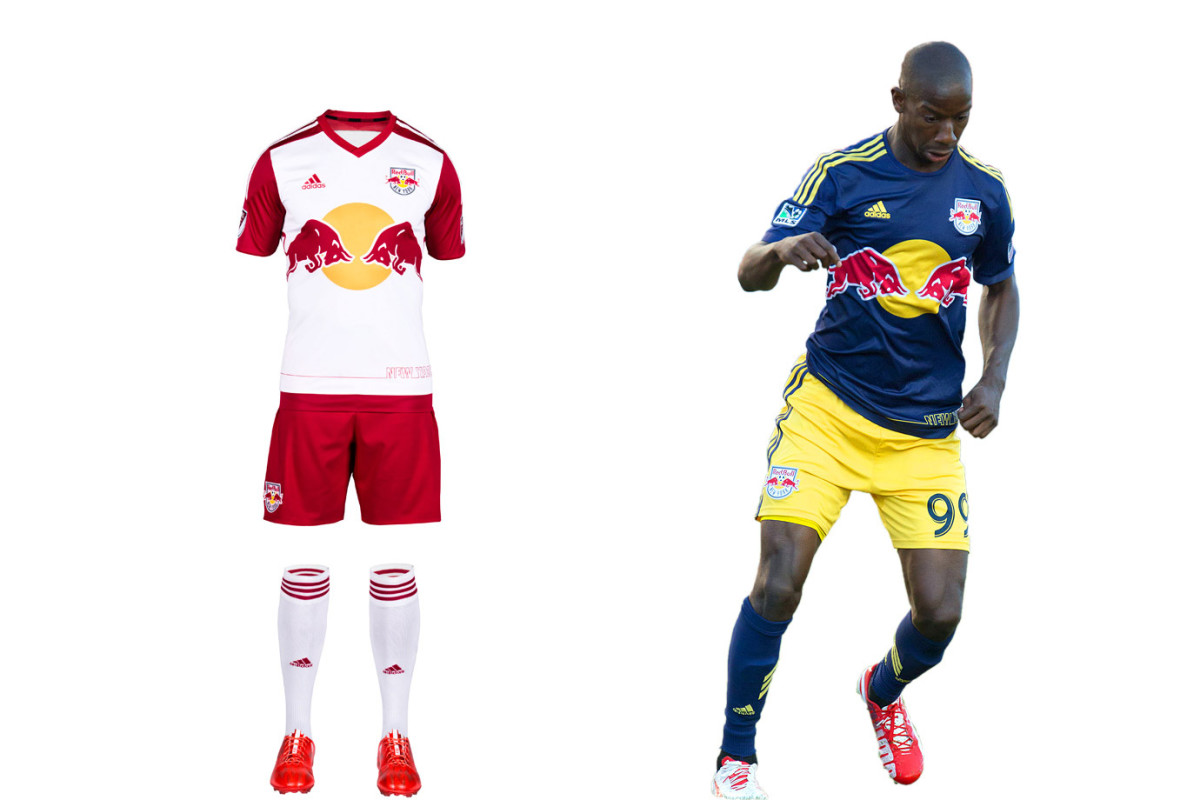
The Red Bulls have company in New York so have set out to reinforce their tenuous connection to the market within the constraints of the club’s corporate brand. The only white-red-white team in the league, RBNY now must compete with NYCFC’s pale blue. The Red Bulls’ new home set doubles down on that contrast with red sleeves and “NEW YORK” emblazoned on the shirt’s lower left in a manner “mimicking the iconic New York skyline.” The “EST.1996” on the back collar reminds fans who was there (or nearby) first. The holdover secondary definitely is unique and is great in reasonable doses.
Houston Dynamo
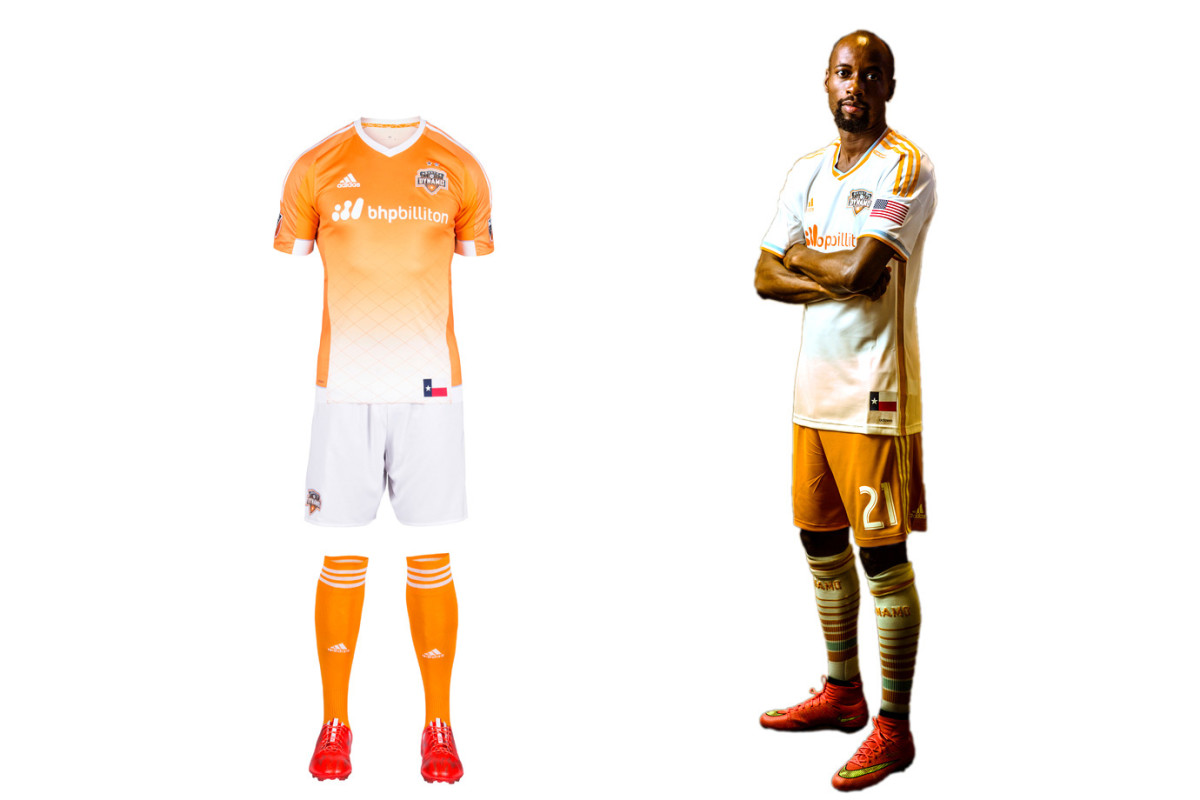
Houston’s club motto is “Forever Orange,” and while that remains the cornerstone of the brand, the Dynamo typically add a wrinkle here and there to ensure we’re not beaten over the head with it. The new home uniform is a great example. The white shorts and checkered fade on the jersey add the right amount of contrast. On occasion, the Dynamo have worn monochrome both home and away. But there’s no need to do so, especially on the road. The balance in the primary kit and the immediately identifiable orange shorts with the secondary set showcase the Dynamo at their best.
Sporting Kansas City
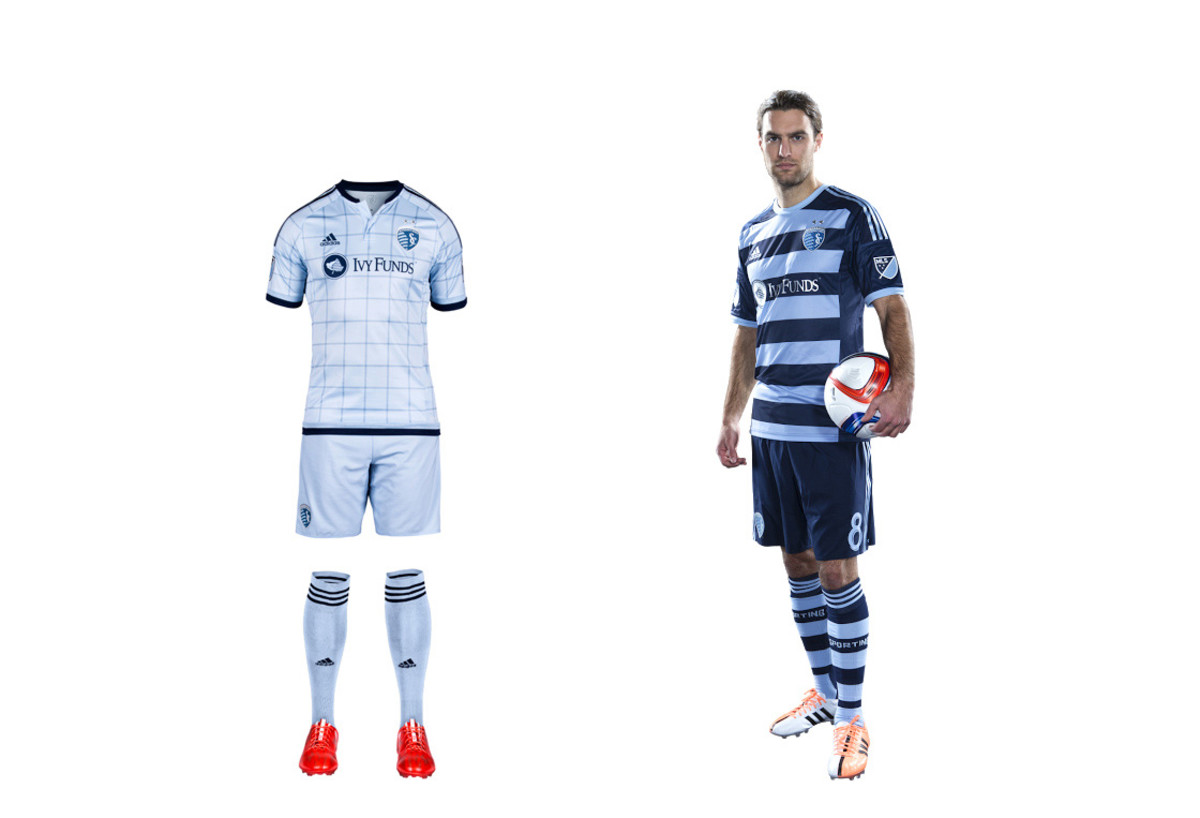
From irrelevant to trendsetting, SKC has profited from one of the most successful sports rebrands in recent history. The club now must share light blue with NYCFC, but Sporting still stands out. The new home set is a departure form the bicolor “state line” uniform of 2013-14 and is anchored by a “fashion-forward window pane pattern” that’s almost as preppy as the recent argyle alternate kit. The secondary uniform is stunning. The hoops, which mirror the stripes on the club crest, highlight one of the most eye-catching sets in MLS history. It’ll be tough to see it go after this season.
FC Dallas
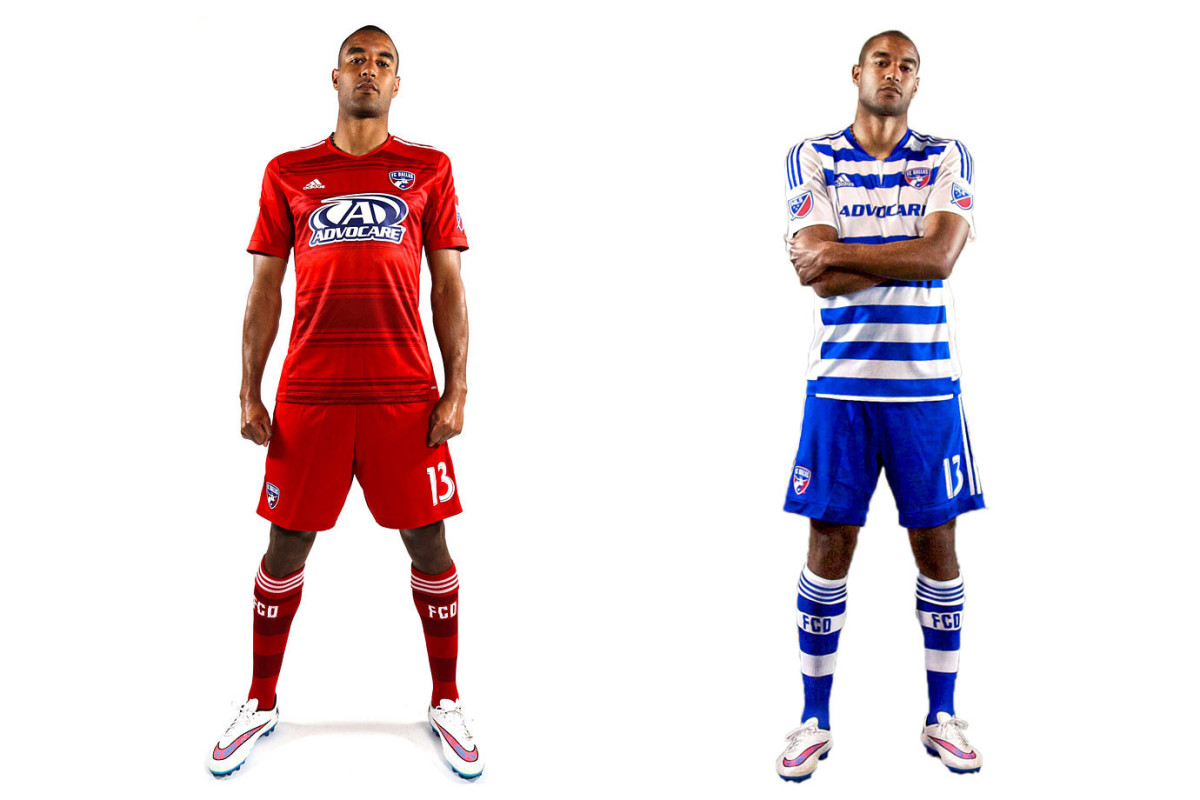
FCD’s kits are an example of a good idea, poorly executed. The club made an inspired decision to go with hoops when rebranding in 2005, but the jerseys always let them down. Unnecessary seams, plackets and panels always ruined the shirt. Dallas gave up last year and went with a boring all-red primary. But it stuck with the hoops on the new blue-and-white secondary, where the side panels and sleeves still disrupt the flow. Both blue and white shorts are an option. Our 2016 ideal: a primary jersey with seamless, sleek red and blue hoops. Unique and colorful, but less jarring. Make it happen.
Colorado Rapids
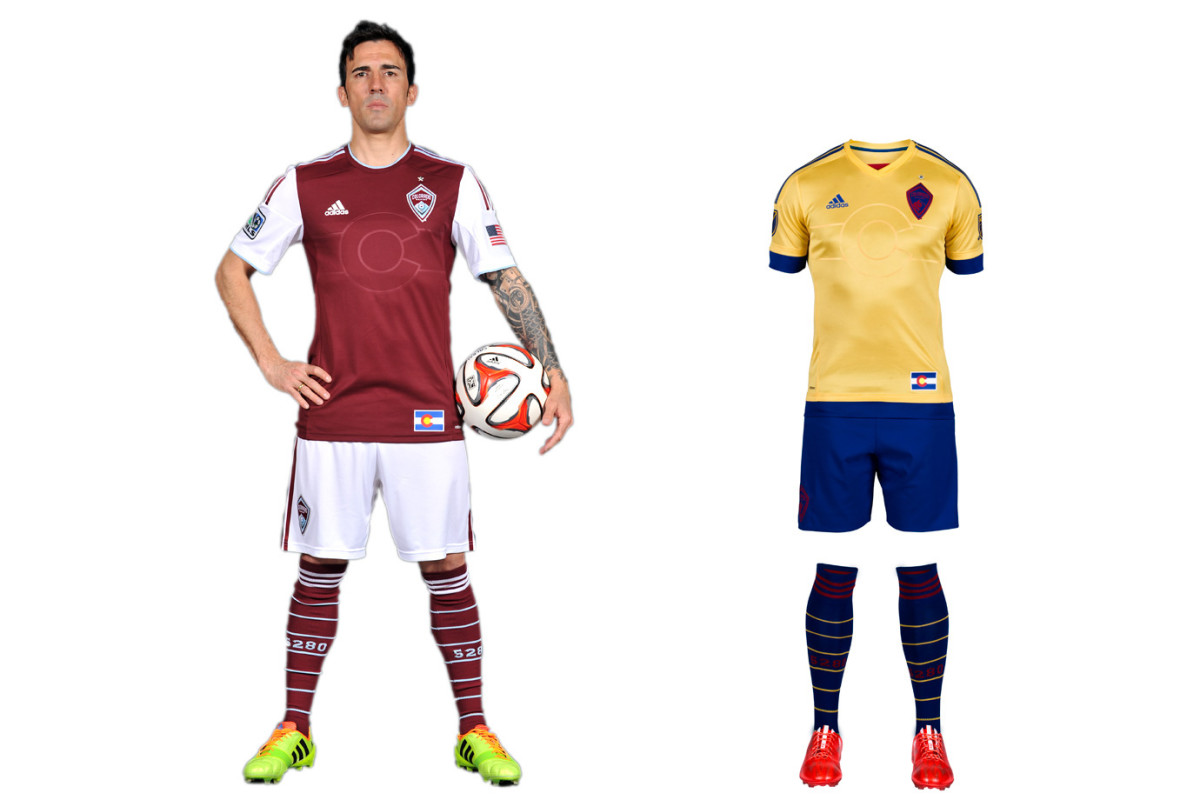
Another club that’s bounced from brand to brand (green-and-white, blue-and-black), the Rapids have settled in nicely with the unique but elegant burgundy-shirt, white-shorts combo. The sleeves, which mirror those worn by sister club Arsenal, add a subtle touch of flair. The new away uniform is a prime example of how a secondary kit can be tasteful and connect to a club’s brand. Last season’s mono blue state-flag set has evolved into a sharp gold-and-blue kit that maintains Colorado's colors and stands out from the crowd. We’re not fans of recolored badges—logos should be sacrosanct—but overall it’s a winner.
Seattle Sounders
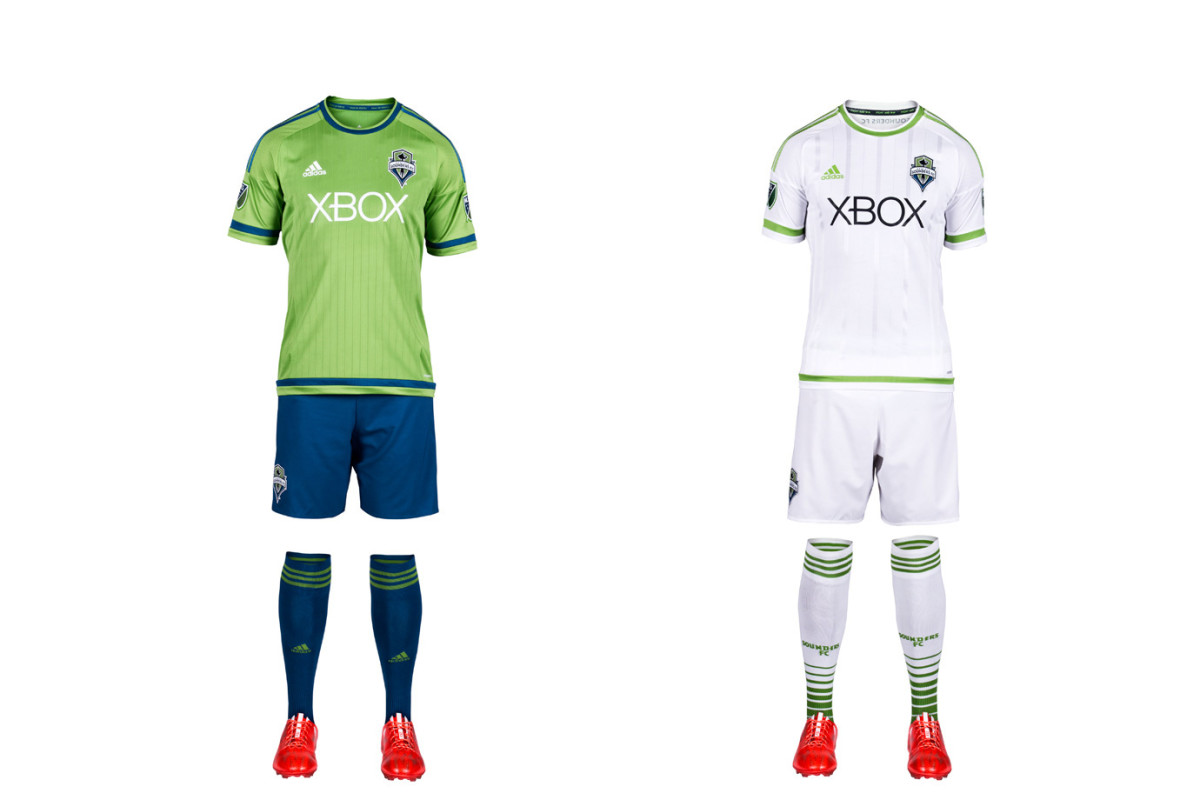
The club that brought us rave green, cascade shale, super cyan and electricity has succumbed to the all-white virus. Seattle is one of five MLS clubs to adopt the look this season, ensuring half the league now embraces the white-out copout. The Sounders new away kit is especially devoid of any personality—a surprising choice for a club that has much of it. The new home set features a less cluttered shirt than in seasons past. It’s a template, but it’s a step up. The uniform also features blue shorts and socks for the first time. Here’s hoping we see it as often as possible.
San Jose Earthquakes
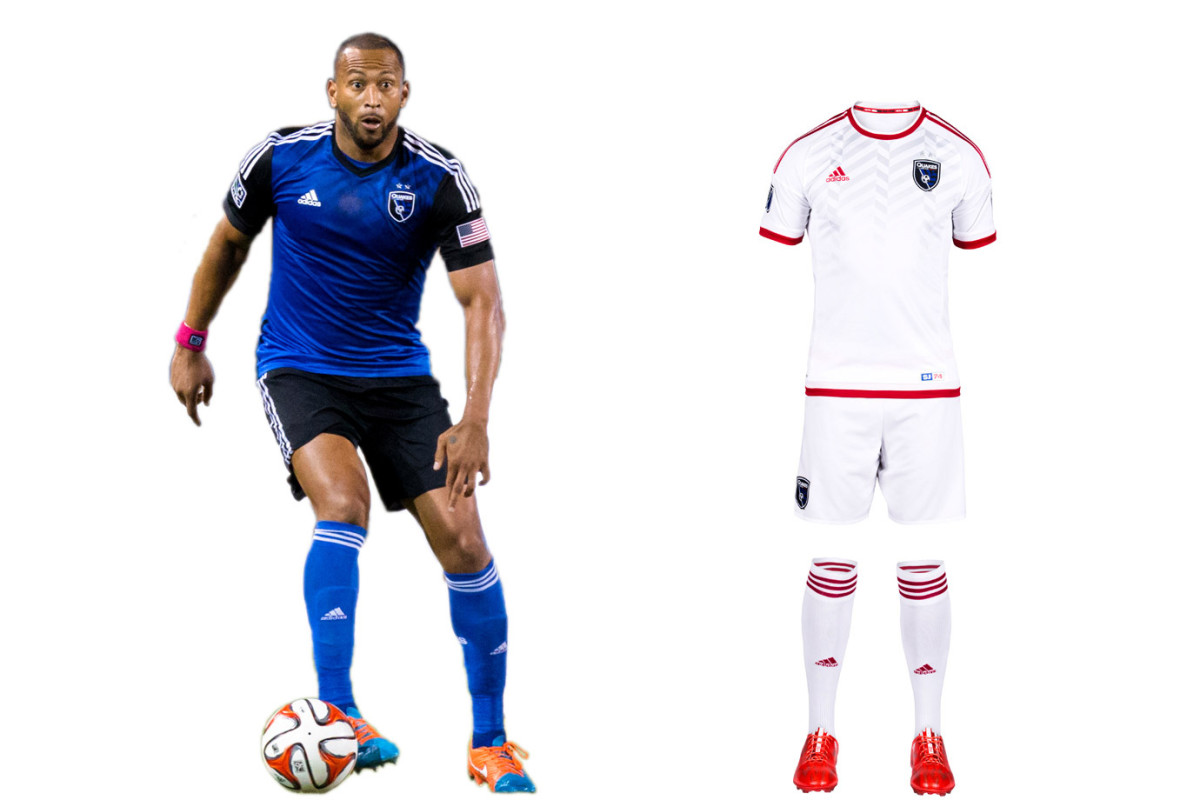
"Earthquakes" is an appropriate moniker for a club that’s experienced so much upheaval. While the new Avaya Stadium offers stability, the brand remains in flux. SJ’s '14 overhaul produced a beautiful blue-and-black primary kit that’s already a modern classic. But the logo, awkwardly anchored by “Quakes”—a nickname of a nickname—lacks gravitas. We liked the re-introduction of the NASL-era red, which inspired last year’s away kit. That’s been replaced by a new white secondary set (yes, another one). It lacks the creativity, individuality and ambition that should be associated with a Bay Area club on the rise.
